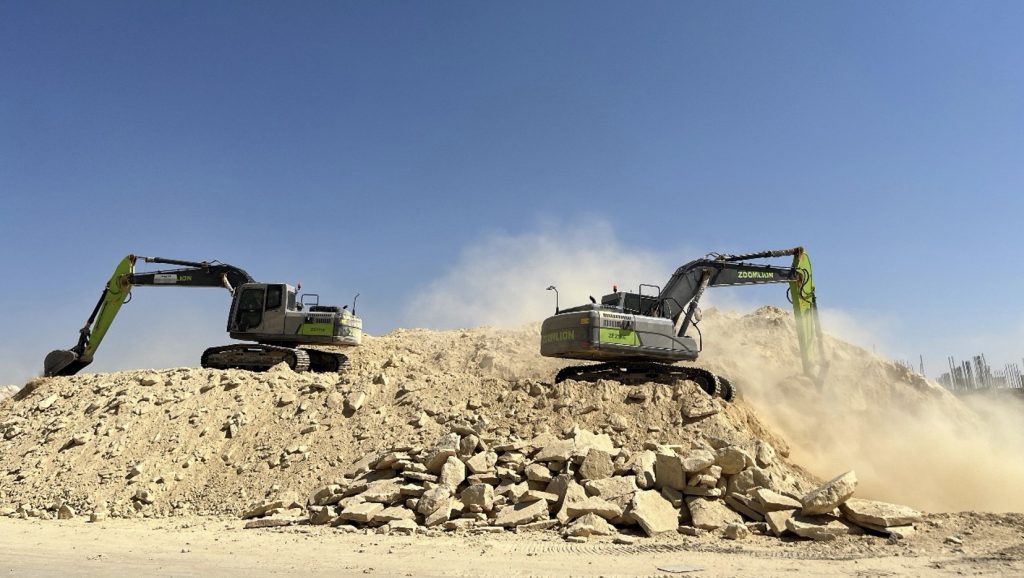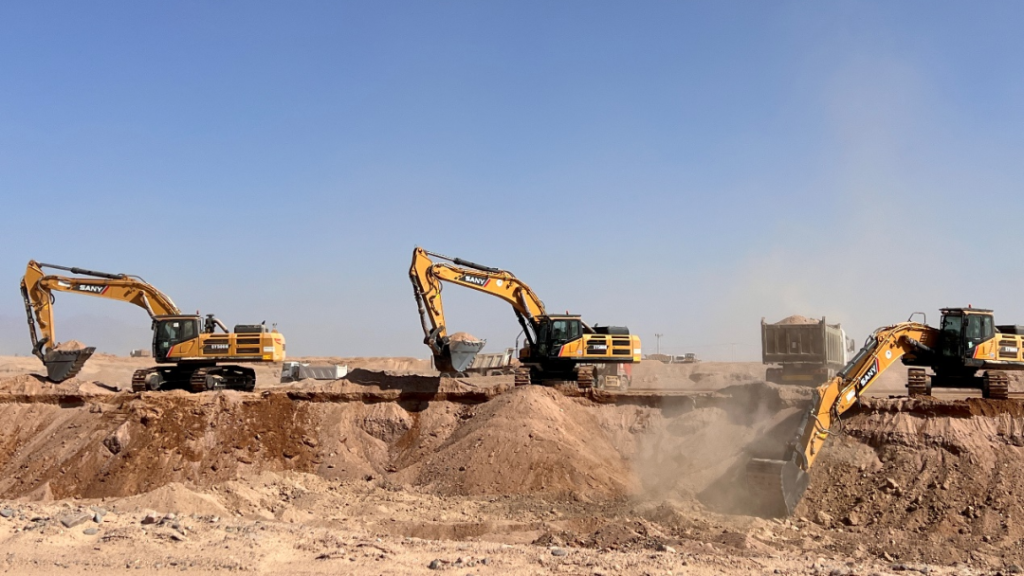2024 Excavator sales stop falling back construction machinery industry inflection point is approaching
Industry News
2025/02/14
With the release of the 2024 excavator sales data, the domestic market’s three-year decline trend has been reversed, signaling that China’s construction machinery industry is likely entering an upward cycle.
According to data from the China Construction Machinery Industry Association, in 2024, major domestic excavator manufacturers sold a total of 201,131 units, marking a year-on-year growth of 3.13%. Of these, domestic sales reached 100,543 units, up by 11.7%, while exports totaled 100,588 units, down by 4.24%. As a barometer for the construction machinery sector, the recovery of excavator sales in 2024 marks the end of consecutive declines, offering a positive outlook.
Looking ahead to 2025, domestic excavator sales are expected to maintain growth of about 10%, while the export market is expected to see a narrowing decline, driven by moderate economic recovery in major regions, according to Zhou Ershuang, an analyst at Dongwu Securities.
Signs of Recovery: The Industry May Enter an Upward Cycle
Since March 2024, the recovery momentum in the industry has become more pronounced. Domestic excavator sales have resumed positive growth and have maintained steady monthly increases, while overseas market sales also turned positive in November and December 2024, with double-digit growth rates.
As a cyclical industry, the construction machinery sector is primarily influenced by demand from downstream industries like real estate and infrastructure, as well as factors such as equipment replacement cycles and environmental policies. The average cycle of the construction machinery industry is approximately 8-10 years. The previous upward cycle began in 2016 and ended in mid-2021, followed by a three-year downtrend.
Data shows that from 2021 to 2023, total excavator sales from major domestic manufacturers declined year-on-year, from 342,800 units in 2021 to 195,000 units in 2023. Domestic sales dropped significantly by 6.32%, 44.6%, and 40.8%, while overseas sales grew in 2021 and 2022 before seeing a slight decline of 4.04% in 2023.
Since March 2024, the domestic market has shown continuous improvement. Monthly excavator sales have consistently risen, and overseas sales have also returned to positive growth by the end of the year, maintaining a double-digit growth rate.
In December 2024, major domestic excavator manufacturers sold 19,369 units, a year-on-year increase of 16%. Domestic sales were 9,312 units, up by 22.1%, while exports totaled 10,057 units, growing by 10.8%.
Zhou Ershuang noted that the sustained growth in the domestic market can be attributed to strong demand in water conservancy projects and mining, which have boosted demand for both small and large excavators. Exports benefited from completed inventory reductions and a marked recovery in demand in certain regions, such as Indonesia.
Excavator Sales as an Indicator of Infrastructure and Investment Trends
Excavator sales serve as a key indicator for infrastructure development and fixed asset investment. Although the industry remains in a cyclical phase in 2024, signals of recovery are becoming increasingly evident.
Additionally, 2024 saw positive growth in the sales of loaders, with a significant narrowing of the decline in domestic sales. According to data from the China Construction Machinery Industry Association, 108,209 loaders were sold domestically in 2024, a year-on-year increase of 4.14%. Domestic sales fell by 3.94%, while exports increased by 13.8%.
Expanding Globally: Accelerating the Global Industrial Layout
The domestic market has entered a period of saturation, meaning that growth for domestic construction machinery companies is increasingly reliant on capturing market share from foreign competitors. In recent years, domestic manufacturers have significantly improved their core component localization rates, enabling them to compete with global giants.
Although total excavator sales in 2024 exceeded 200,000 units, when broken down by domestic and export sales, domestic sales fell sharply from the peak of 274,400 units in 2021 to 100,000 units in 2024, while export sales increased from 68,400 units to 100,000 units during the same period.
In 2024, the export value of construction machinery also continued to grow. According to Customs data, the export value of China’s construction machinery reached $52.86 billion in 2024, a year-on-year increase of 8.87%.
Domestic companies have been rapidly expanding their global footprint, with many industry leaders seeing profitability rise as a result. For instance, XCMG Machinery (000425.SZ) reported a net profit of 5.31 billion yuan in the first three quarters of 2024, a 9.71% increase from the previous year. Sany Heavy Industry (600031.SH) reported a net profit of 4.87 billion yuan, a 19.66% year-on-year growth, while Zoomlion (000157.SZ) achieved a 9.95% increase with a net profit of 3.14 billion yuan.
XCMG continues to prioritize internationalization, aiming to become a world-class enterprise. As of 2024, international revenues accounted for 46.6% of its total sales, growing by around 9% year-on-year. Zoomlion also made notable progress in expanding its international business, with foreign revenues growing by 35.42% year-on-year, now contributing to a larger share of the company’s total revenue.
Policy Support for Industry Development
Despite facing significant economic challenges, China’s timely introduction of policy measures such as “Two New” and “Two Heavy” has provided a boost to the construction machinery sector, resulting in visible improvements in economic conditions and industry development.
In Sany Heavy Industry’s “Factory No. 18” in Changsha, the industrial internet platform, RootLink, connects data from millions of machines across the country, providing real-time updates to an index reflecting the pulse of the infrastructure sector.
In 2024, certain machinery types, including truck cranes, crawler cranes, and tower cranes, achieved the highest operating rates, surpassing 70% for several months. Excavator equipment also saw notable usage, with operating rates reaching 58.87%.


